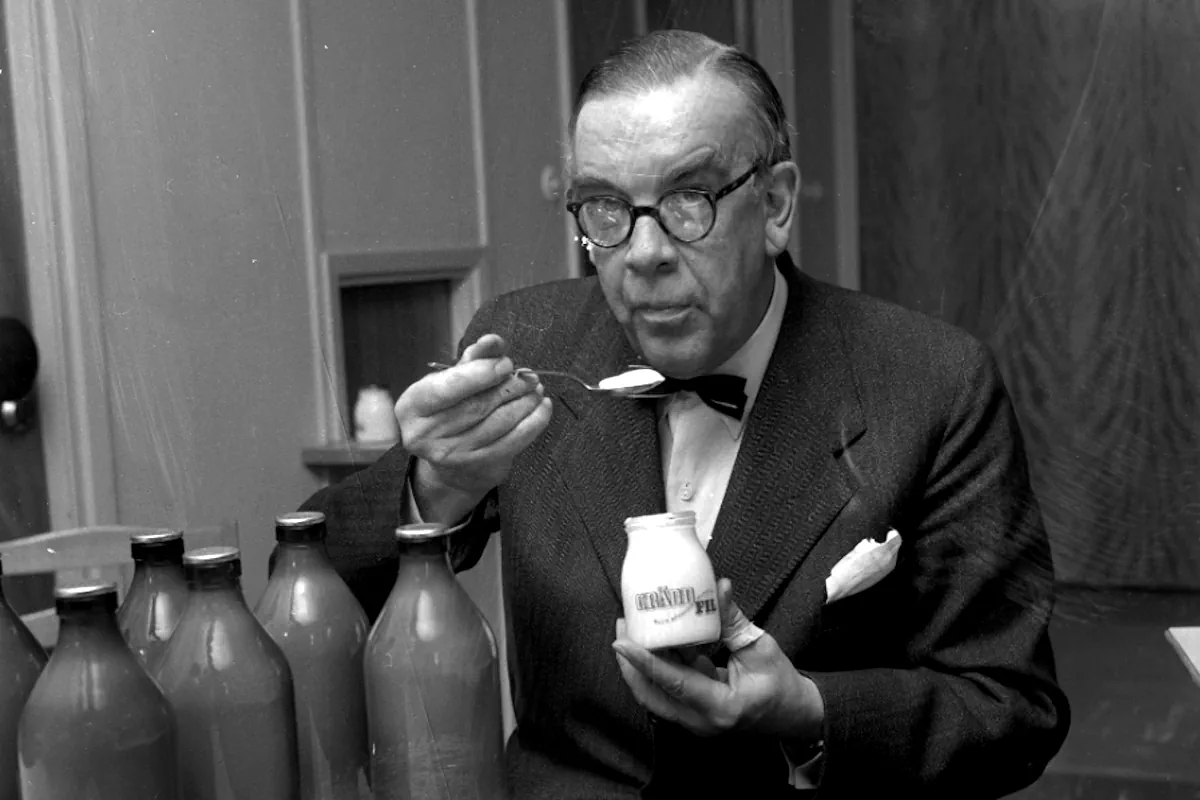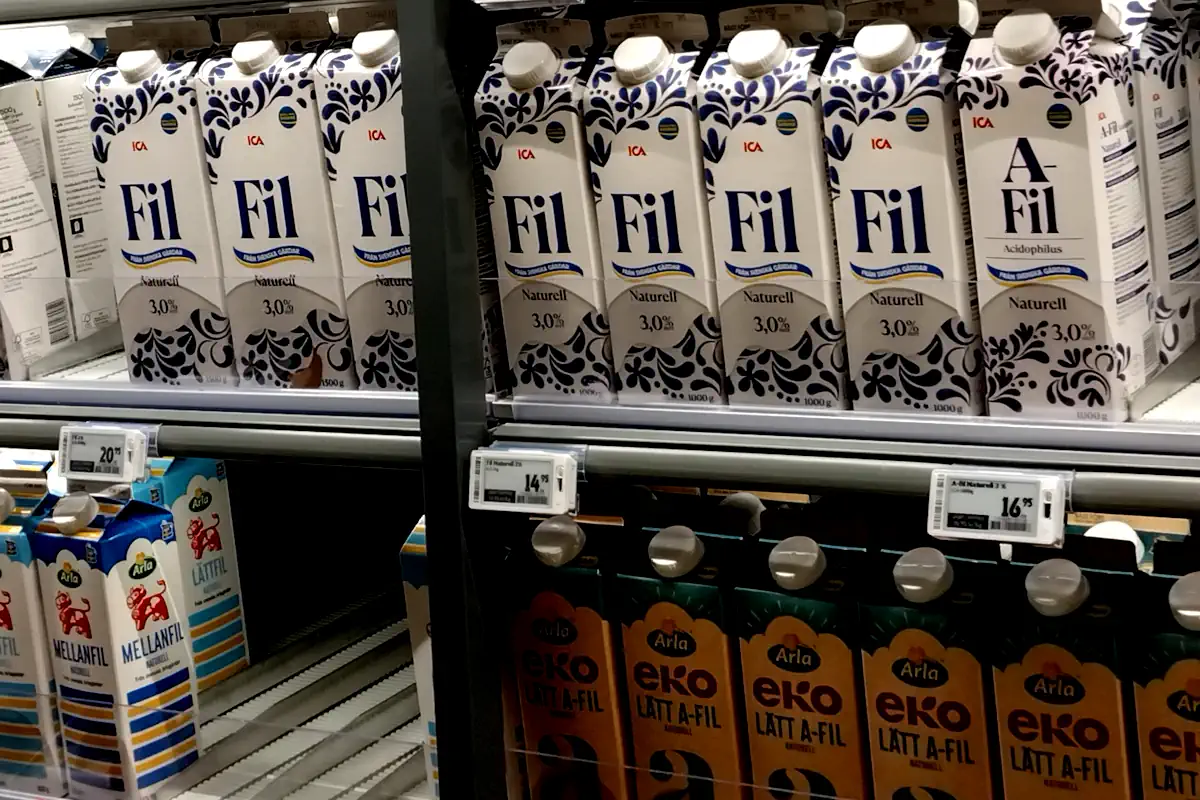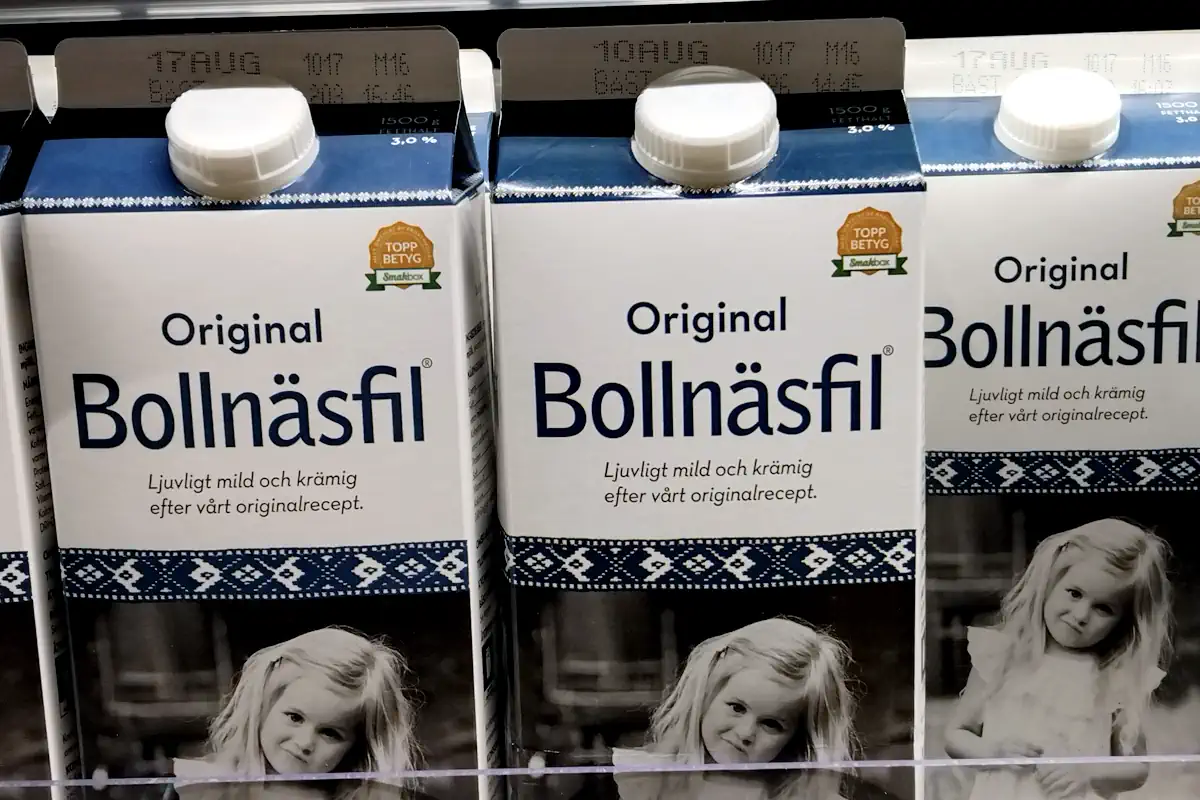 Photo: © StockholmMuseum.com
Photo: © StockholmMuseum.com
Filmjölk: Sweden’s Cultured Breakfast Tradition
When Swedes sit down for breakfast, one item is as common as coffee or crispbread: filmjölk. This cool, tangy, pourable dairy drink has been part of Swedish tables for centuries. Simple yet nourishing, it’s more than food—it’s a tradition that connects modern kitchens to Viking-era farms.
From Viking roots to modern fridges
The origins of filmjölk stretch back over a thousand years, when farmers left fresh milk to ferment naturally, creating a longer-lasting source of nourishment. By the early 20th century, production was industrialized—first by Mjölkcentralen in 1931—making filmjölk a staple across Sweden’s households.


What is it?
Filmjölk is a type of yogurt-like product, but it differs from traditional yogurt in several ways. It is made by fermenting milk with specific strains of lactic acid bacteria, such as Lactococcus lactis and Leuconostoc mesenteroides, which give it a smooth, buttery flavor and a mild tartness. Unlike yogurt, this cultured milk ferments at room temperature, eliminating the need for heating or specialized equipment.
Cultural implications
In Sweden, this traditional dairy is more than just a food item; it’s deeply ingrained in the culture. Traditionally, it was a vital part of the dairy products made by women in rural areas, who would ferment milk to preserve it for long periods. Today, filmjölk is a common breakfast or snack item, often enjoyed with flatbread or as a base for smoothies.
Varieties and availability
Visitors to Stockholm can find various types of filmjölk in any local grocery store. These include Filmjölk, Mellanfil (low-fat), Lättfil (non-fat), and Långfil, which has a unique elastic texture. Some stores also offer flavored versions or lactose-free options.


Health benefits
Filmjölk is rich in probiotics, protein, vitamins, and minerals, making it a nutritious addition to any diet. Its fermentation process lowers the pH, providing antimicrobial properties and a characteristic sour flavor. The probiotics support digestive health and offer several other health benefits.
How to enjoy filmjölk
- Breakfast:
Enjoy filmjölk with granola or muesli for a nutritious start. - Smoothies:
Use it as a base for smoothies with fruits like blueberries or pineapple. - Baked goods:
Incorporate it into recipes for cakes or breads for added moisture and flavor.
Making your own
If you’re adventurous, you can easily make filmjölk at home. Simply mix a starter culture with milk in a jar, let it ferment at room temperature for 24-36 hours, and then refrigerate.
However, one of the most fascinating aspects of filmjölk is its self-sustaining nature. You can create new batches of it indefinitely by saving a couple of tablespoons from an existing batch and mixing it with fresh milk. This process allows the bacteria to propagate and ferment the new milk, creating a continuous cycle of fresh filmjölk. This method has been used for generations, making this cultured milk a truly sustainable and traditional food product.
In conclusion, filmjölk is not just a food product; it’s a window into Swedish culture and tradition. Whether you’re exploring Stockholm’s markets or trying it at home, filmjölk offers a unique taste experience that combines history, nutrition, and simplicity.
Visit Info
![]() Swedish Filmjölk
Swedish Filmjölk
![]() Fil, Filmjölk
Fil, Filmjölk



